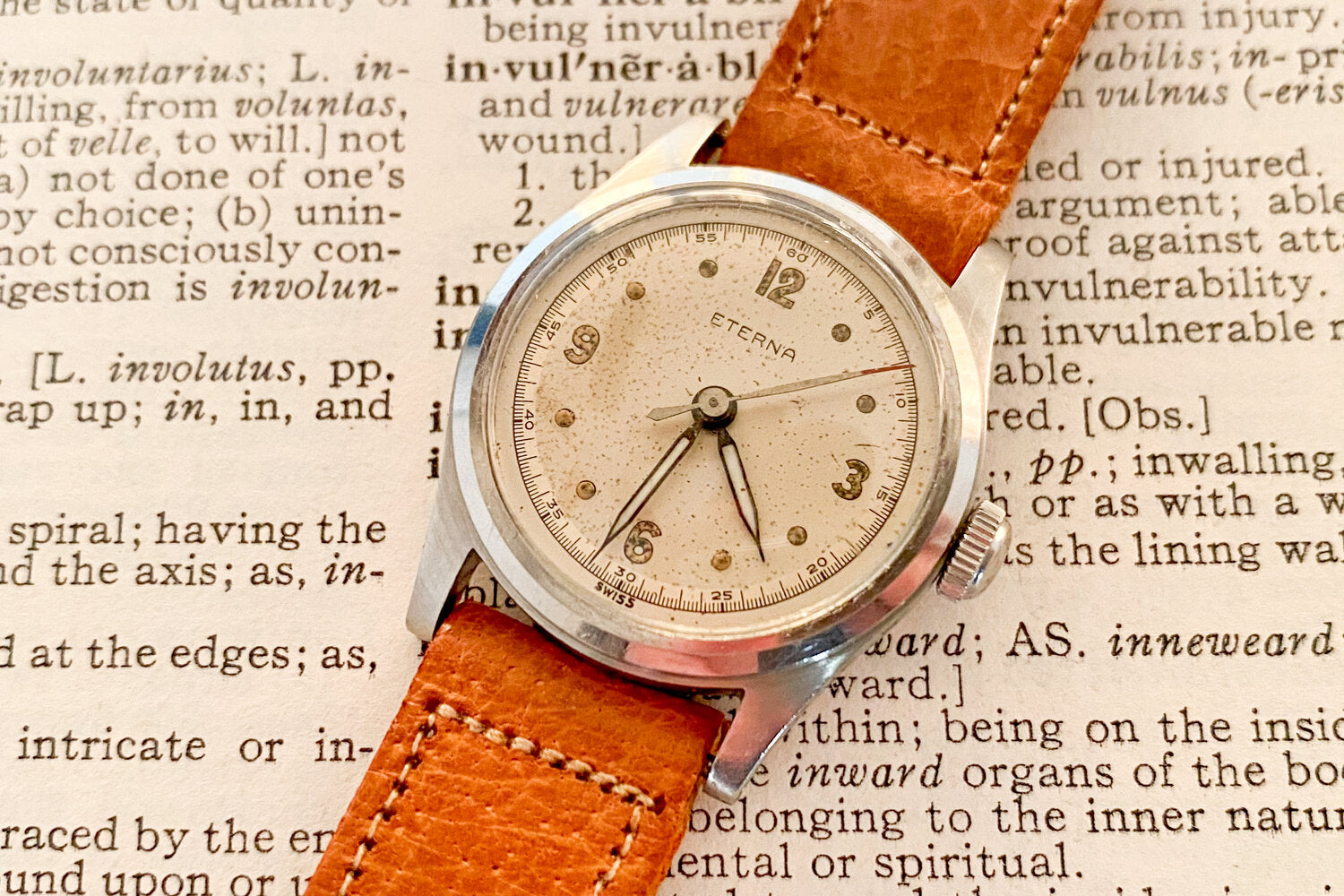Let’s Talk History of The Universal Geneve Polerouter
Two Let’s Talk History articles in a row? We’ve made it to the inevitable impasse in watch writing: the man himself, Gerald Genta. Felix Arnold of The Young Horologist brings us a guest editorial on the smallest watch from the biggest name in watch design.

Image courtesy of Analog Shift
The name Gerald Genta is nearly as important a name in the watch world as Rolex is. He is one of a select few people who are considered legends in the watch industry. While most of us will pin his success on his two most famous designs, the Audemars Piguet Royal Oak, and the Patek Phillipe Nautilus, he was also responsible for one of the best and most widely loved vintage pieces of all time. Today we are going to take a look at the Polerouter from Universal Geneve.
In 1954, a 23-year-old Gerald Genta was approached by Universal Geneve to design a watch to be issued to pilots of the Scandinavian Airlines Systems (SAS). The group, made up of an amalgamation of three airlines, had been breaking some pretty impressive flying records, and wanted a watch to accompany their success. In 1952, they had been the first airline to conduct a trans-arctic flight in a commercial plane. A year later they were responsible for the first ever flight over the geographical North Pole — pretty groundbreaking stuff for the time.

Box and papers, baby. Image courtesy of Analog Shift
Carrying out these flights led them to run into two issues that were wreaking havoc with their time-telling instruments in the planes, and the watches on the pilot and crew’s wrists. The first of these was magnetism. These issues led the SAS to develop a whole new navigation system that was resistant to the magnetic fields at play. This magnetism also harmed the watches worn on the flight, thus Universal Geneve was approached to create an antimagnetic watch. Even in 1954, Universal Geneve were widely respected for their work with watch technology. Young Genta was approached to draw up a design, and his affectionately named ‘Polarouter’ was an instant hit.
The watch was originally brought to market in 1954. The Polarouter came in a 34.5mm case, with curvaceous Bombay lugs and omitted the date window from the dial. A year later, in 1955, the line was renamed ‘Polerouter’ and this name has stuck ever since. The initial watch was such a success that it stemmed a whole line of watches. The line was produced until 1969 and included the Polerouter Jet, Polerouter De Luxe, Polerouter Geneve and Polerouter Sub — to name but a few.

A Polerouter Sub, Image courtesy of Analog Shift
One feature of the Polerouter that has made it such an icon is the movement. Unlike most automatic watches which have a peripheral rotor that is centrally mounted within the movement, Universal Geneve developed a micro-rotor movement, effectively a 2/3 scale rotor that sits flush to the rest of the movement. This allowed for the same benefits of a full size rotor to be realised, but without the need for the added case height. This in turn allows the Polerouter to be very thin, making it a stunning dress piece for sliding under a shirt cuff.
Despite all of this high praise for the Polerouter, until the last few years it had remained a fairly underappreciated watch. A perfect use of hindsight five years ago would let you pick up a near-NOS Polerouter for around $700 (I actually toyed with the idea of getting one, but instead went for a modern Seiko SRP775). I hear you asking, “How much is a Polerouter now? Why don’t I just pick one up now?” Well... Now that the significance and design of the watch has been realised, they can’t be had for below $2,500. God, hindsight is a pain in the arse.
The reason for writing this article, outside of my love for the Polerouter, is that I believe it is a fantastic way to start in vintage watches. So many people I know either come to me saying they want to get their first vintage piece and are going to pick up a Vintage Omega, or they have already done so and love the watch, and all credit to them. But I think the other watch that has to be spoken about in that same conversation is the Polerouter. Pictures speak a thousand words, so have a look at the photos below and try to disagree with me.
For a comparable price, you are getting a watch which is equally, or arguably more attractive than a Seamaster, as well as getting a watch from a designer that would otherwise be largely unattainable. It’s not like many of us can afford Royal Oaks or Nautilus’s at the moment! Not only that but they house one of the most technically innovative movements of all time. Adding to that, the variety of models that you can have, and the aesthetic appeal, makes for a pretty unbelievable all-round watch if you ask me.
As I alluded to, the prices are not what they used to be, but considering the prestige of the watch and the man who designed it, $2,500 is still amazing value. It is also worth noting that they can be had for less than that with the right amount of hunting! It is definitely worth having a look online, whether you are considering your first vintage piece or your hundredth.
Felix Arnold (@felix4545) is one of the founding members of The Young Horologist (@the_young_horologist) quoted as being ‘a watch blog for the ill informed and the horologically addicted’. The premise is that the blog is an educational tool for new and seasoned enthusiasts alike, focusing on reviews and educational articles about all things watches.




